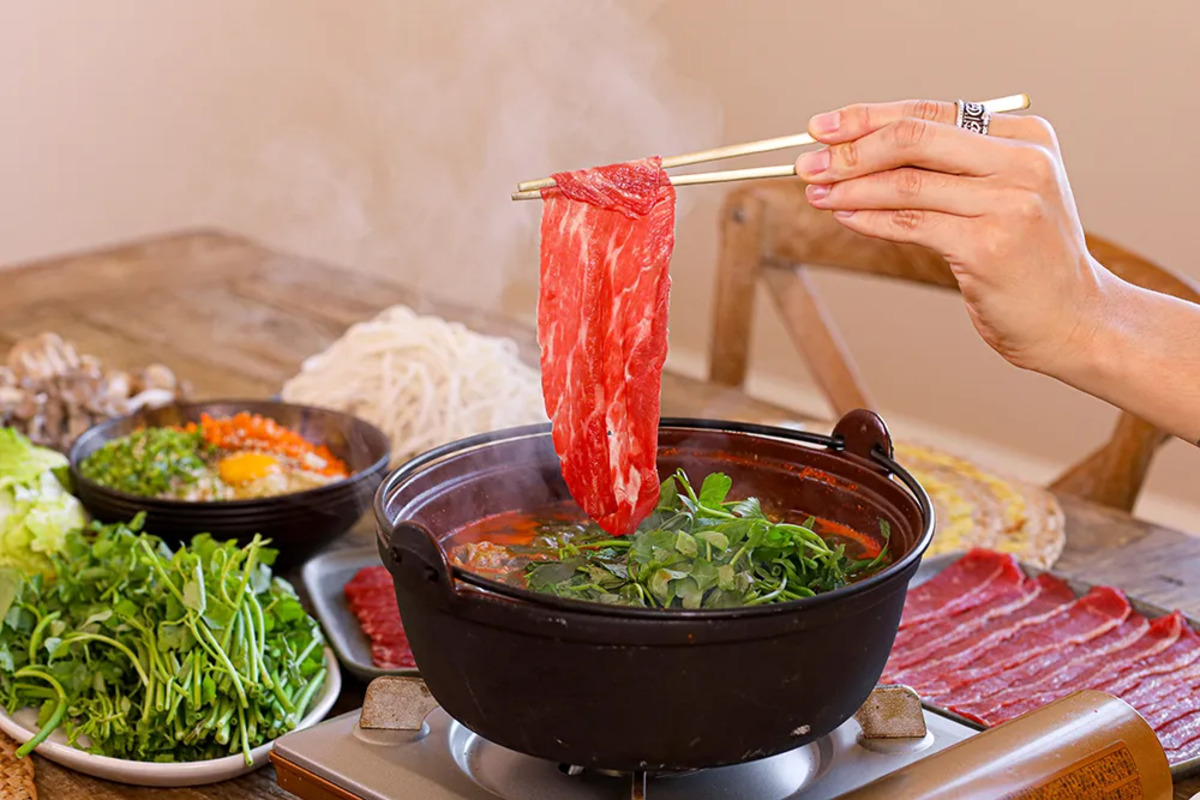

Articles
What Is A Korean Hot Pot
Modified: August 16, 2024
Discover the traditional Korean hot pot and learn how to make it in this informative article. Explore the ingredients and techniques used to create this delicious dish.
(Many of the links in this article redirect to a specific reviewed product. Your purchase of these products through affiliate links helps to generate commission for Storables.com, at no extra cost. Learn more)
Introduction
Welcome to the world of Korean hot pot, a culinary tradition that has been warming both hearts and stomachs for centuries. Known for its comforting and flavorful broths, as well as a wide variety of fresh ingredients, Korean hot pot is a popular dish that brings people together to share a delicious meal.
The history of Korean hot pot dates back to ancient times, where it was originally developed as a way to cook and enjoy food during the cold winter months. Over the years, it has evolved into a beloved staple of Korean cuisine, with each region putting its own unique spin on the dish.
One of the defining features of Korean hot pot is the communal aspect of the meal. It is often enjoyed with family and friends, as everyone gathers around a simmering pot, adding their favorite ingredients and savoring the aroma as the flavors meld together.
There are various types of Korean hot pot, each with its own distinct characteristics and flavors. From the classic and comforting kimchi stew to the spicy and aromatic budae jjigae, there is a hot pot for every palate.
One of the key elements of Korean hot pot is the wide array of ingredients that can be added to the pot. From marinated meats and fresh vegetables to noodles and tofu, the possibilities are nearly endless. These ingredients not only add variety to the meal, but also contribute to the overall nutritional value.
Preparing Korean hot pot involves various cooking techniques, such as simmering, boiling, and steaming. These techniques help to infuse the broths with flavor, while also ensuring that the ingredients are cooked to perfection.
In this article, we will explore the different types of Korean hot pot, delve into the history and regional variations, discuss the health benefits, and provide some popular recipes for you to try at home. So, grab a spoon, gather your loved ones, and get ready to indulge in the comforting and delicious world of Korean hot pot.
Key Takeaways:
- Korean hot pot, or jeongol, is a versatile and communal culinary tradition that offers a diverse range of flavors, ingredients, and regional variations, making it a delightful and interactive dining experience for friends and family.
- Beyond its delicious flavors, Korean hot pot provides numerous health benefits, including nutrient-rich ingredients, balanced flavors, and a focus on hydration, making it a nourishing and wholesome meal that promotes overall well-being.
Read more: What Is A British Hot Pot
History of Korean Hot Pot
The origins of Korean hot pot can be traced back to the ancient times when people sought ways to stay warm during the harsh Korean winters. Hot pot, known as “jeongol” in Korean, quickly became a popular method of cooking and enjoying food in a communal setting.
The concept of communal dining in Korea dates back centuries, with hot pot being a central part of this tradition. It provided not only warmth but also a way for people to come together and bond over a shared meal. In fact, hot pot became a symbol of unity and togetherness in Korean culture.
During the Joseon Dynasty (1392-1910), hot pot was enjoyed by both the royalty and the commoners. However, the ingredients used in hot pot varied depending on social status and availability. The upper class had access to a wider range of ingredients, including various meats, seafood, and exotic spices, while the lower class made use of more affordable ingredients like vegetables and tofu.
Over time, hot pot recipes and techniques were passed down through generations, with each region developing its own unique style. For example, the southern region of Jeolla is known for its hearty and flavorful hot pots, while the coastal regions incorporate an abundance of seafood into their recipes.
Hot pot also played a crucial role during times of hardship and war. In the aftermath of the Korean War, when food was scarce, Koreans created the iconic budae jjigae, or “army stew.” This hot pot was made from a mix of surplus military rations, such as Spam, sausages, and beans, along with Korean ingredients like kimchi and ramen noodles. Budae jjigae has since become a popular and unique variation of Korean hot pot.
In recent years, Korean cuisine has gained international recognition, and hot pot has become a beloved dish worldwide. Korean restaurants around the globe offer various types of Korean hot pots, providing a taste of Korean culture and tradition.
Today, Korean hot pot continues to be a cherished part of Korean culinary traditions. Whether enjoyed during festive celebrations, family gatherings, or simply as a comforting meal, hot pot remains a symbol of warmth, unity, and the rich cultural heritage of Korea.
Types of Korean Hot Pot
Korean hot pot, or jeongol, comes in a variety of types, each offering a unique flavor profile and culinary experience. While there are countless variations, let’s explore some of the most popular types of Korean hot pot:
- Kimchi Jjigae: This is perhaps the most iconic and well-known Korean hot pot. It is made with a spicy and tangy broth that is flavored with fermented kimchi, along with additional ingredients like pork, tofu, and vegetables. The kimchi adds a depth of flavor and a satisfying kick to the dish.
- Haemul Sundubu Jjigae: This hot pot features a spicy and savory broth made with soft tofu (“sundubu”) and an assortment of fresh seafood (“haemul”). The combination of the creamy tofu and the briny seafood creates a rich and comforting flavor.
- Budae Jjigae: As mentioned in the history section, budae jjigae is a unique variation of Korean hot pot that originated after the Korean War. It combines Korean ingredients like kimchi and gochujang (red pepper paste) with Western ingredients such as sausages, ham, and canned baked beans. This fusion of flavors creates a hearty and satisfying hot pot experience.
- Galbitang: This hot pot focuses on beef short ribs (“galbi”) and is known for its rich and flavorful broth. The meat is simmered for several hours to create a fragrant and tender dish. The galbitang hot pot often includes mushrooms, vegetables, and glass noodles, adding depth and texture.
- Yukgaejang: Yukgaejang is a spicy and hearty hot pot made with shredded beef, vegetables, and noodles. The broth is infused with the flavors of gochujang (red pepper paste) and gochugaru (red pepper flakes), resulting in a bold and robust dish that is perfect for colder days.
These are just a few examples of the diverse range of Korean hot pots available. Each type offers its own distinctive flavors and ingredients, allowing you to explore the wide variety of tastes that Korean cuisine has to offer.
When dining out, many Korean restaurants offer a “jeongol” menu section where you can choose from different hot pot options. Alternatively, you can also try making Korean hot pot at home with pre-made broth mixes or by experimenting with your own combination of ingredients. So why not gather friends and family, get creative in the kitchen, and enjoy the warm and comforting experience of a Korean hot pot feast?
Ingredients Used in Korean Hot Pot
Korean hot pot, or jeongol, is a versatile and customizable dish that allows for a wide variety of ingredients to be used. From meats to vegetables and everything in between, the ingredients play a vital role in creating the diverse flavors and textures that make Korean hot pot so delicious. Here are some common ingredients used in Korean hot pot:
- Meats: Pork, beef, and chicken are commonly used in Korean hot pot. These meats can be thinly sliced, marinated, or used as larger cuts to add richness and depth of flavor to the broth. Some popular choices include pork belly, beef brisket, and chicken thighs.
- Seafood: Fresh seafood is a staple in many Korean hot pots, adding a delightful briny flavor. Shrimp, clams, mussels, and squid are commonly used. Fish fillets, such as cod or mackerel, can also be added to the hot pot for a delightful seafood twist.
- Tofu: Soft tofu, also known as “sundubu,” is a popular ingredient in Korean hot pot. It adds a creamy and silky texture to the broth. Firm tofu can also be used for a firmer texture and to absorb the flavors of the broth.
- Noodles: Various types of noodles are often added to Korean hot pot to provide a filling and satisfying element. Glass noodles, made from sweet potato starch, are commonly used. Korean sweet potato noodles (dangmyeon) or rice noodles can also be used to add a chewy and hearty component.
- Vegetables: Korean hot pot is known for its abundance of fresh vegetables. Popular choices include napa cabbage, mushrooms (such as shiitake and enoki), bean sprouts, spinach, carrots, and green onions. These vegetables not only add flavor and texture but also contribute to the overall nutritional value of the dish.
- Kimchi: Kimchi, fermented cabbage or radish, is a staple in Korean cuisine and is often added to hot pot for its tangy and spicy flavors. Kimchi adds depth and complexity to the broth, as well as a unique and distinct taste.
- Sauces and Seasonings: Gochujang (red pepper paste), gochugaru (red pepper flakes), soy sauce, garlic, and sesame oil are commonly used to season and enhance the flavors of the hot pot. These sauces and seasonings add a balance of sweet, savory, and spicy notes to the dish.
The beauty of Korean hot pot is that you can mix and match these ingredients to create a personalized and flavorful experience. Whether you prefer a seafood-focused hot pot, a meat lover’s delight, or a vegetable-centric feast, the combination of ingredients is limited only by your imagination.
So gather your favorite ingredients, prepare the broth, and enjoy the exciting and interactive experience of cooking and sharing Korean hot pot with friends and family.
Cooking Techniques for Korean Hot Pot
Korean hot pot, or jeongol, involves various cooking techniques that are essential in bringing out the flavors and textures of the ingredients. From simmering to boiling and steaming, these cooking techniques play a crucial role in creating a delicious and satisfying hot pot experience. Here are some cooking techniques commonly used in Korean hot pot:
- Simmering: Simmering is a gentle and slow cooking technique that allows the flavors of the ingredients to meld together. After bringing the broth to a boil, reduce the heat and let the hot pot simmer. This technique ensures that the ingredients are cooked thoroughly while preserving their natural flavors.
- Boiling: Boiling is used to quickly cook ingredients that require shorter cooking times. Meat, seafood, and vegetables can be added to the boiling broth for a few minutes until they are cooked through. This cooking technique helps to retain the freshness and texture of the ingredients.
- Steaming: Steaming is often used to cook delicate ingredients like tofu and dumplings. Place a steamer basket over the hot pot and allow the steam to cook the ingredients. This gentle cooking method helps to keep the ingredients moist and tender.
- Cooking at the table: One unique aspect of Korean hot pot is that it is often cooked and enjoyed at the table. This interactive experience allows each diner to add their preferred ingredients to the simmering broth and control the cooking time. It also creates a sense of togetherness and fun as everyone participates in the cooking process.
As you cook Korean hot pot, keep in mind that different ingredients may require different cooking times. It’s important to add ingredients gradually, starting with those that require more cooking time and gradually adding more delicate ingredients. This ensures that everything is cooked to perfection.
Additionally, the choice of broth is crucial in determining the overall flavor of the hot pot. You can use pre-made broth mixes or make your own flavorful broth from scratch. The broth serves as the foundation of the hot pot, so it’s important to choose a base that complements the ingredients you plan to use.
Lastly, don’t forget to season your hot pot with sauces and seasonings. Gochujang (red pepper paste), soy sauce, garlic, and sesame oil are commonly used to add depth and enhance the flavors of the hot pot. These seasonings can be added to individual servings or directly into the communal pot, allowing each person to adjust the taste according to their preference.
By mastering these cooking techniques and experimenting with different combinations of ingredients and seasonings, you can create a Korean hot pot that is uniquely yours. So gather your loved ones, gather around the table, and enjoy the delightful and interactive experience of cooking and savoring Korean hot pot.
When making a Korean hot pot, be sure to use a flavorful broth as the base, and include a variety of fresh vegetables, thinly sliced meats, and tofu for a delicious and satisfying meal.
Read more: What Is A Hot Pot Restaurant
Popular Korean Hot Pot Recipes
Korean hot pot, or jeongol, offers a wide range of delicious and comforting recipes that cater to different tastes and preferences. From classic flavors to new and inventive combinations, here are some popular Korean hot pot recipes for you to try:
- Kimchi Jjigae: This is a classic and beloved Korean hot pot recipe. The base of the soup is made with spicy and tangy kimchi, along with pork, tofu, and vegetables. The combination of flavors creates a hearty and satisfying dish that is perfect for cold winter nights.
- Haemul Sundubu Jjigae: This hot pot features a spicy and savory broth made with soft tofu (“sundubu”) and an assortment of fresh seafood (“haemul”). The addition of mushrooms and vegetables adds depth to the flavors, making it a popular choice for seafood lovers.
- Dak Galbi Jjigae: This hot pot recipe is made with marinated chicken, vegetables, and sweet potatoes. The spicy and flavorful broth is created by combining the gochujang sauce with garlic, ginger, and soy sauce. It’s a delicious and satisfying option for those who enjoy spicy dishes.
- Budae Jjigae: This unique hot pot recipe originated after the Korean War and combines Korean ingredients with surplus military rations. It typically includes ingredients like sausages, spam, baked beans, and kimchi. The combination of flavors creates a rich and satisfying dish that is both nostalgic and delicious.
- Galbitang: This hot pot focuses on beef short ribs (“galbi”) and is known for its rich and flavorful broth. The meat is simmered for hours until it becomes tender, and it is often served with mushrooms, vegetables, and glass noodles. It’s a comforting and hearty option for beef lovers.
These are just a few examples of the diverse range of Korean hot pot recipes available. The beauty of Korean cuisine is its versatility, allowing you to customize the recipes to your liking. Feel free to add or substitute ingredients according to your preferences and dietary requirements.
Remember, Korean hot pot is a communal meal, so make sure to gather your friends and family around the table to enjoy the experience together. Set out the ingredients, let everyone add their desired items, and enjoy the warmth and flavors of Korean hot pot.
Whether you are a fan of spicy, seafood, or meat-based flavors, there is a Korean hot pot recipe that will satisfy your taste buds and warm your soul. So roll up your sleeves, get creative in the kitchen, and indulge in the deliciousness of Korean hot pot.
Regional Variations of Korean Hot Pot
Korea is a country known for its diverse culinary traditions, and Korean hot pot, or jeongol, is no exception. Each region of Korea has its own unique spin on hot pot, with variations that highlight local ingredients and flavors. Here are some regional variations of Korean hot pot:
- Jeolla Province: Located in the southwestern part of Korea, Jeolla Province is known for its hearty and flavorful hot pots. One popular variation is Jeonju bibimbap jeongol, which combines the iconic bibimbap flavors with hot pot. It features beef, vegetables, and gochujang sauce, creating a rich and satisfying dish.
- Gyeongsang Province: Gyeongsang Province, in the southeastern part of Korea, is famous for its spicy and flavorful cuisine. The region offers variations like Gyeongsang spicy chicken hot pot, which features chicken, vegetables, and a spicy broth made with gochujang, gochugaru, and other fiery seasonings.
- Gangwon Province: Located in the northeastern part of Korea, Gangwon Province is known for its fresh seafood. Hot pots in this region often incorporate an abundance of seafood like squid, clams, and shrimp. One popular variation is Gangwon spicy seafood hot pot, which is packed with flavor and features a rich seafood broth.
- Jeju Island: Jeju Island, a popular tourist destination, has its own unique hot pot variation called Jeju black pork hot pot. It features succulent and tender Jeju black pig meat, along with local vegetables and a flavorful broth, resulting in a rich and savory dish.
- Seoul: As the capital city of Korea, Seoul offers a diverse range of hot pot variations influenced by different regional cuisines. One popular variation is dakhanmari, which includes chicken, noodles, and a clear broth made with the flavors of ginseng and jujubes.
These are just a few examples of the regional variations of Korean hot pot. Each variation showcases the unique culinary traditions and ingredients of the respective regions. No matter where you are in Korea, you’ll find hot pot recipes that highlight local flavors and ingredients.
Exploring the regional variations of Korean hot pot allows you to experience the diverse flavors and culinary heritage of Korea. So, next time you have the opportunity, try a regional hot pot, or even experiment with creating your own fusion of flavors by combining elements from different regions. The possibilities are endless!
Health Benefits of Korean Hot Pot
Korean hot pot, or jeongol, not only satisfies the taste buds but also offers several health benefits. With its emphasis on fresh ingredients, balanced flavors, and cooking techniques that preserve nutrients, Korean hot pot can be a nutritious and wholesome meal. Here are some of the health benefits of Korean hot pot:
- Nutrient-Rich Ingredients: Korean hot pot typically includes a wide variety of vegetables, lean proteins, and seafood. These ingredients are packed with essential vitamins, minerals, and antioxidants that support overall health and well-being. For example, vegetables like spinach, mushrooms, and napa cabbage are rich in vitamins A, C, and K, while seafood provides omega-3 fatty acids, which promote heart health.
- Balanced Flavors: Korean hot pot incorporates a balance of flavors, including spicy, savory, and tangy elements. This variety of tastes stimulates the appetite and encourages mindful eating. By savoring each flavorful bite, you are more likely to eat slowly and feel satisfied with smaller portions.
- Low in Fat: Korean hot pot often uses lean cuts of meat and incorporates minimal added fats. By avoiding excessive amounts of oil and fatty ingredients, Korean hot pot can be a healthier option compared to other heavy and greasy dishes.
- Broth Benefits: The broth used in Korean hot pot is not only flavorful but can also have additional health benefits. For instance, kimchi-based hot pots offer the probiotic benefits of fermented foods, which support gut health and digestive function. Additionally, broths made from bones or seafood shells can provide collagen, a protein that supports joint health and may contribute to a more youthful appearance.
- Hydration: Korean hot pot typically involves a simmering broth, which can help keep you hydrated. The warm broth encourages fluid intake and can assist in replenishing lost fluids, especially during colder months when it may be challenging to drink enough water.
In addition to the individual health benefits, the communal nature of Korean hot pot promotes social interaction and connection, which contributes to overall well-being. Sharing a hot pot meal with family and friends enhances the enjoyment of the experience and fosters a sense of belonging.
It’s worth mentioning that, as with any dish, the health benefits of Korean hot pot can vary depending on the specific ingredients, cooking methods, and portion sizes. To maximize the health benefits, choose a variety of nutrient-rich ingredients, use minimal added fats, and practice portion control.
So, the next time you gather around a simmering Korean hot pot, relish the delicious flavors while also appreciating the potential health benefits that this comforting and nourishing dish can offer.
Tips for Enjoying Korean Hot Pot
Korean hot pot, or jeongol, is not just a delicious meal but also a wonderful communal experience. To fully enjoy your Korean hot pot feast, here are some helpful tips:
- Choose your ingredients wisely: Select a variety of fresh and high-quality ingredients for your hot pot. Explore different vegetables, meats, seafood, and tofu options to create a diverse and flavorful experience.
- Prepare the broth: The broth is the foundation of your hot pot, so take the time to make it flavorful and balanced. You can use pre-made broth mixes or make your own from scratch. Experiment with different seasonings and spices to customize the taste to your liking.
- Keep a balance in ingredients: Aim for a well-rounded hot pot by combining a mix of proteins, vegetables, and carbohydrates. This balance not only enhances the flavors but also provides a wide range of nutrients and textures.
- Don’t overcrowd the pot: Avoid overloading the hot pot with too many ingredients at once. Cooking in small batches allows for even cooking and better control over the timing. Gradually add ingredients as you eat, ensuring everything stays fresh and properly cooked.
- Experiment with dipping sauces: Korean hot pot is often enjoyed with a variety of dipping sauces. Prepare simple sauces using ingredients like soy sauce, sesame oil, gochujang, or vinegar. Adjust the flavors to your preferences and use them to enhance the taste of your cooked ingredients.
- Enjoy the cooking process: Korean hot pot is a social and interactive meal. Take the time to cook the ingredients together, savoring the aromas and enjoying the experience. Engage in conversations, laugh, and bond with your fellow diners as you cook and enjoy the hot pot together.
- Try different combinations: Korean hot pot is versatile, so feel free to get creative with your ingredient combinations. Mix and match flavors, experimenting with different ingredients, sauces, and seasonings. Discover your favorite combinations and make the hot pot your own.
- Take your time: Korean hot pot is designed to be a leisurely meal. Take breaks between bites, allowing yourself to fully appreciate the flavors and textures of each ingredient. Enjoy the warmth and comforting nature of the hot pot as you savor each delicious spoonful.
- Save room for leftovers: Korean hot pot often yields generous portions. If you can’t finish everything, don’t worry! Leftovers can be stored and enjoyed the next day. In fact, the flavors often intensify, bringing new depth and richness to the dish.
By following these tips, you can fully immerse yourself in the delightful and interactive experience of enjoying Korean hot pot. So gather your loved ones, create a warm and inviting atmosphere, and embark on a culinary journey that brings joy, togetherness, and a delicious feast to your table.
Read more: What Is Chinese Hot Pot
Conclusion
Korean hot pot, or jeongol, is a culinary tradition that has captivated the hearts and palates of people for centuries. This communal and comforting meal brings people together, creating moments of warmth, togetherness, and shared delight. From its rich history to its diverse regional variations, Korean hot pot offers a treasure trove of flavors and culinary experiences to explore.
Whether you’re enjoying a classic kimchi jjigae, a spicy haemul sundubu jjigae, or a creative fusion like budae jjigae, the beauty of Korean hot pot lies in its versatility. With a vast array of ingredients, cooking techniques, and personal preferences, you can customize your hot pot to suit your unique taste buds.
But Korean hot pot is not just about the delicious flavors. It also offers numerous health benefits, thanks to its focus on nutrient-rich ingredients, balanced flavors, and cooking methods that maintain the integrity of the nutrients. From providing essential vitamins and minerals to promoting hydration and digestive health, Korean hot pot can nourish both body and soul.
Furthermore, Korean hot pot is a shared experience. The communal aspect of cooking and enjoying hot pot with loved ones fosters connections and creates lasting memories. Gathering around a simmering pot, engaging in conversations, and relishing in the flavors together is a true celebration of food, culture, and the joy of being in each other’s company.
So, whether you’re exploring the regional variations, experimenting with different ingredients and seasonings, or simply enjoying the warmth and comfort of the hot pot, I encourage you to embrace the essence of Korean hot pot. Take your time, savor each delicious bite, and immerse yourself in the delightful experience that Korean hot pot offers.
Now, it’s time to gather your friends and family, set the table, and embark on a culinary adventure that transcends the boundaries of taste and nourishes the bonds that bring us together as human beings. Enjoy the flavors, share the laughter, and create lasting memories with the delicious and heartwarming tradition of Korean hot pot.
Frequently Asked Questions about What Is A Korean Hot Pot
Was this page helpful?
At Storables.com, we guarantee accurate and reliable information. Our content, validated by Expert Board Contributors, is crafted following stringent Editorial Policies. We're committed to providing you with well-researched, expert-backed insights for all your informational needs.
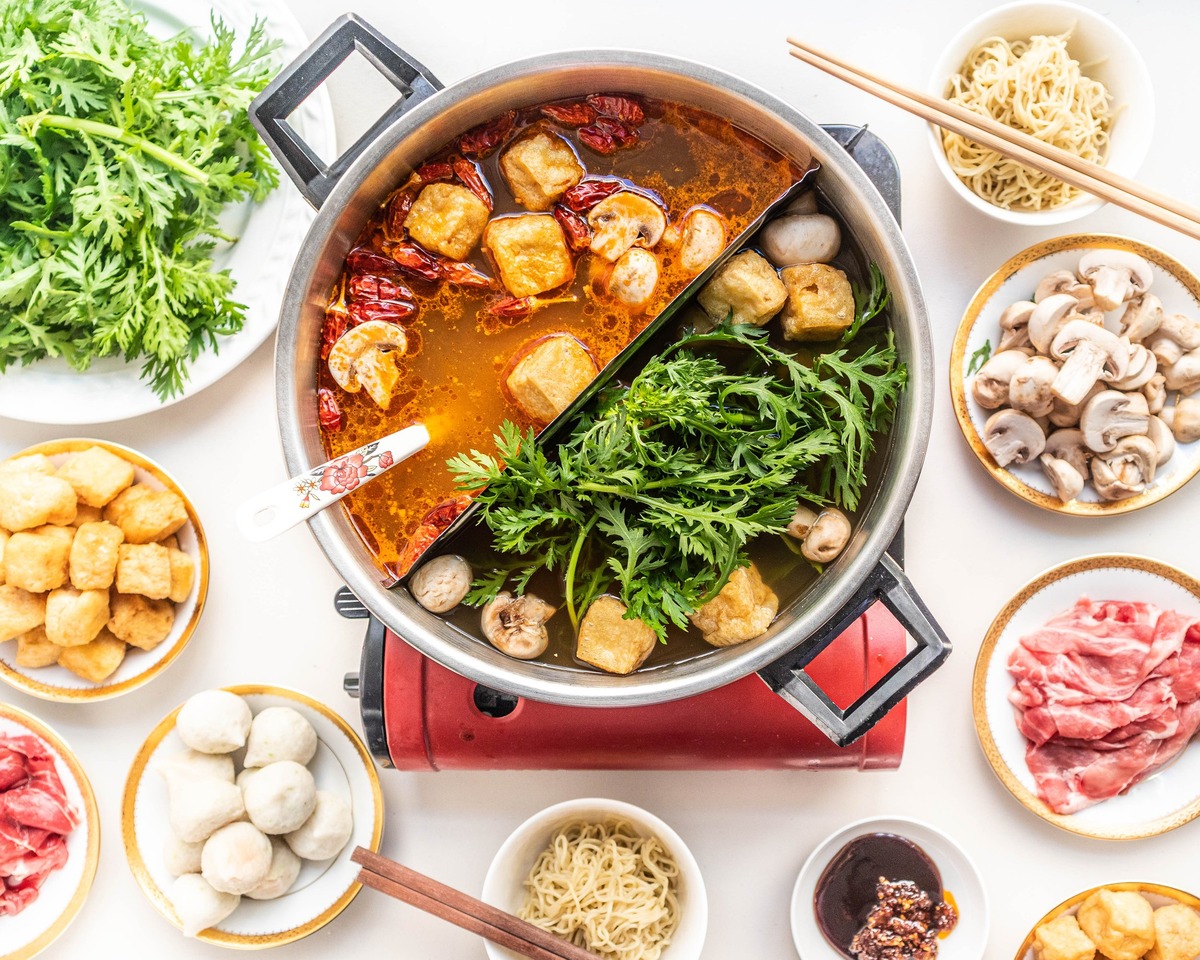
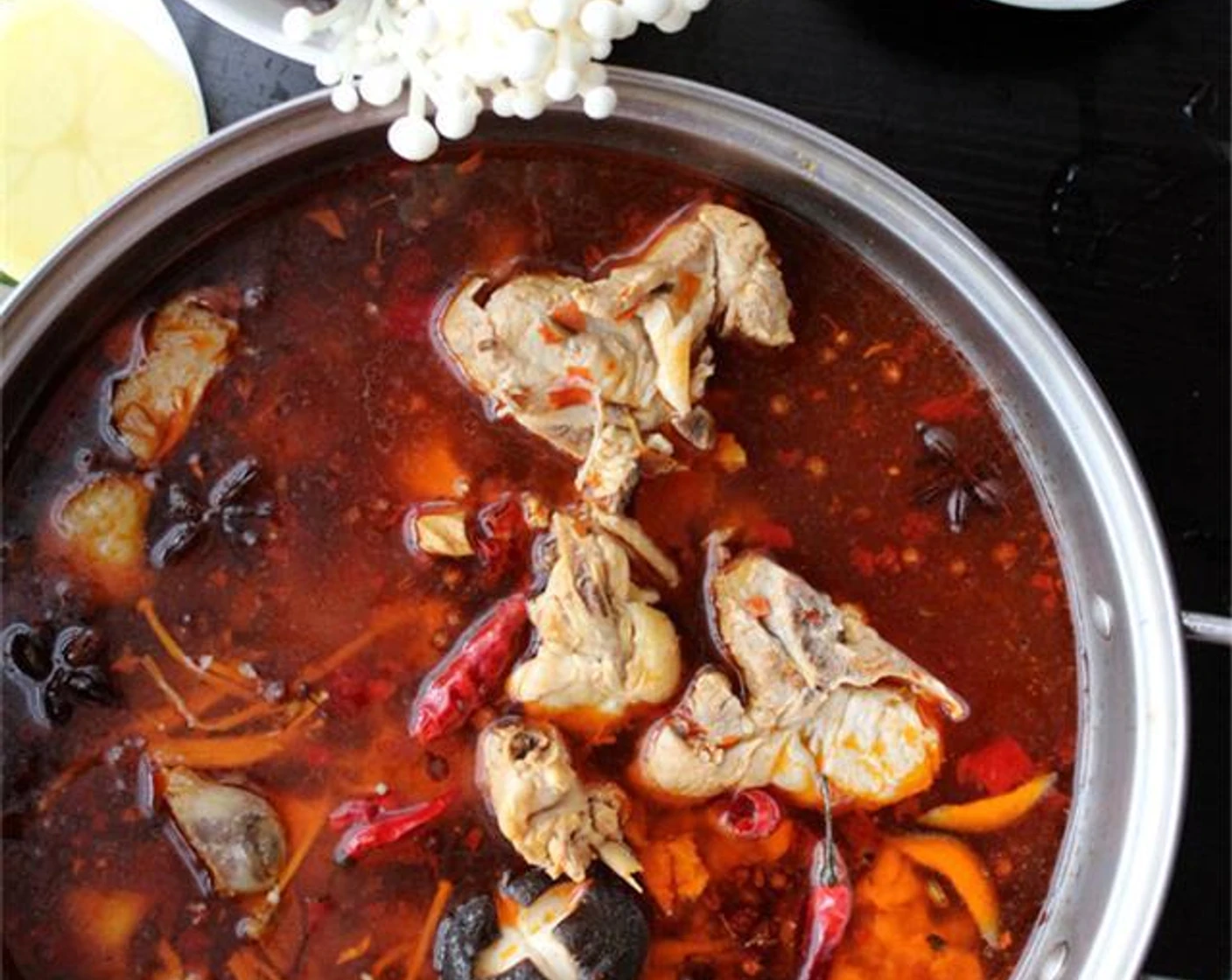
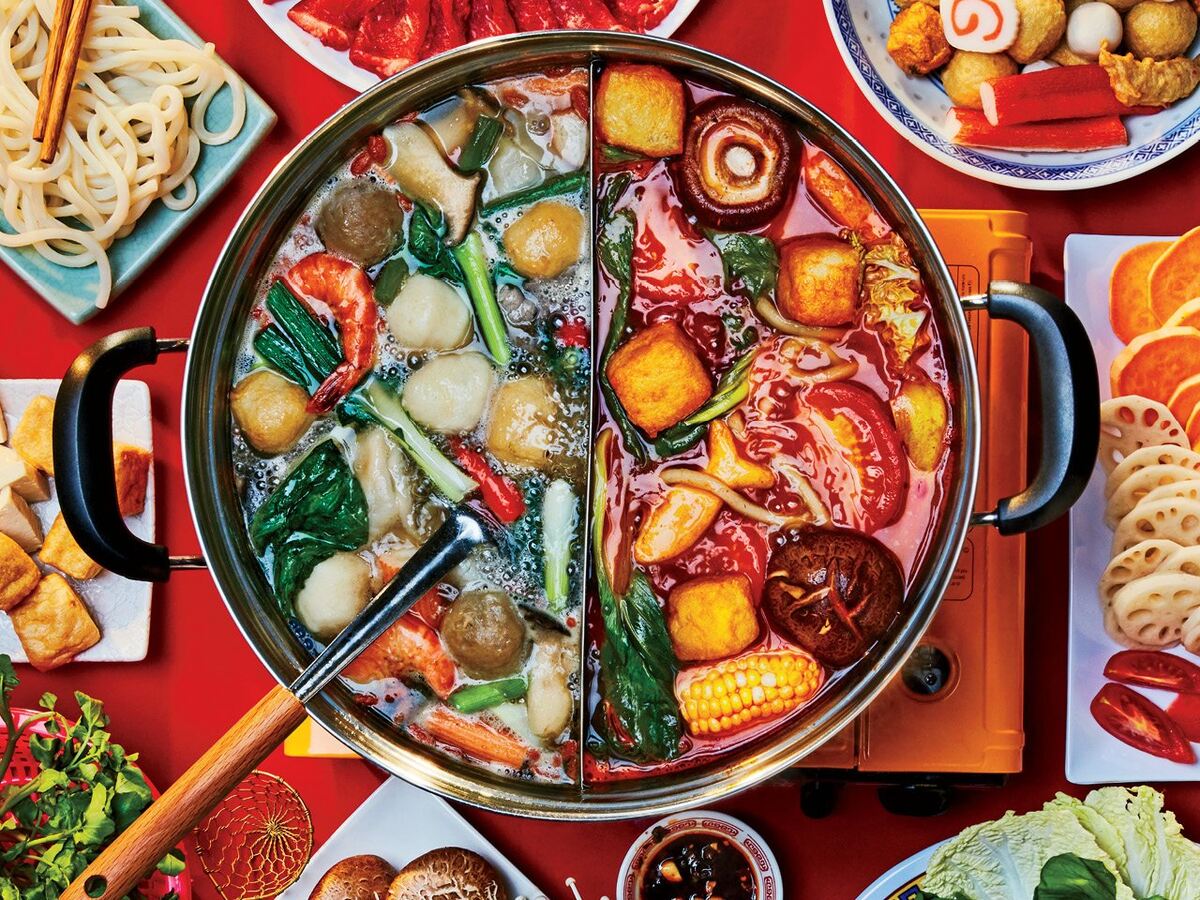
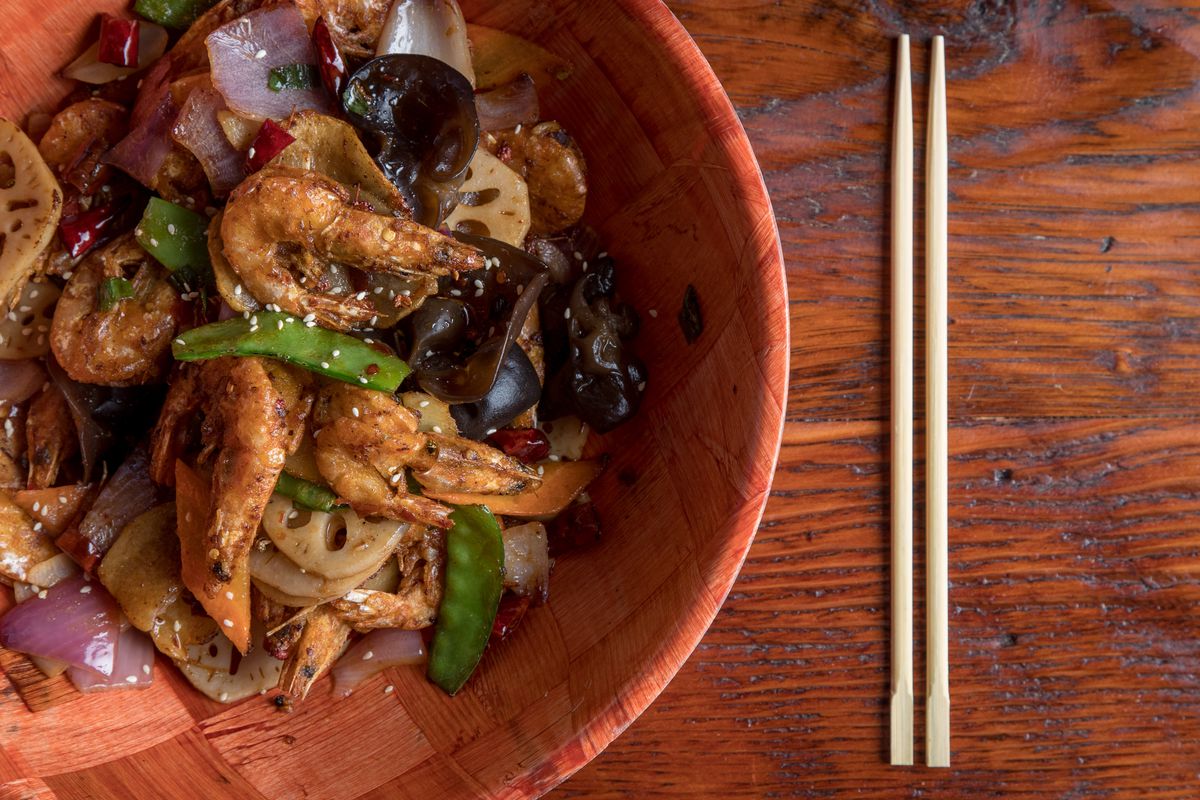
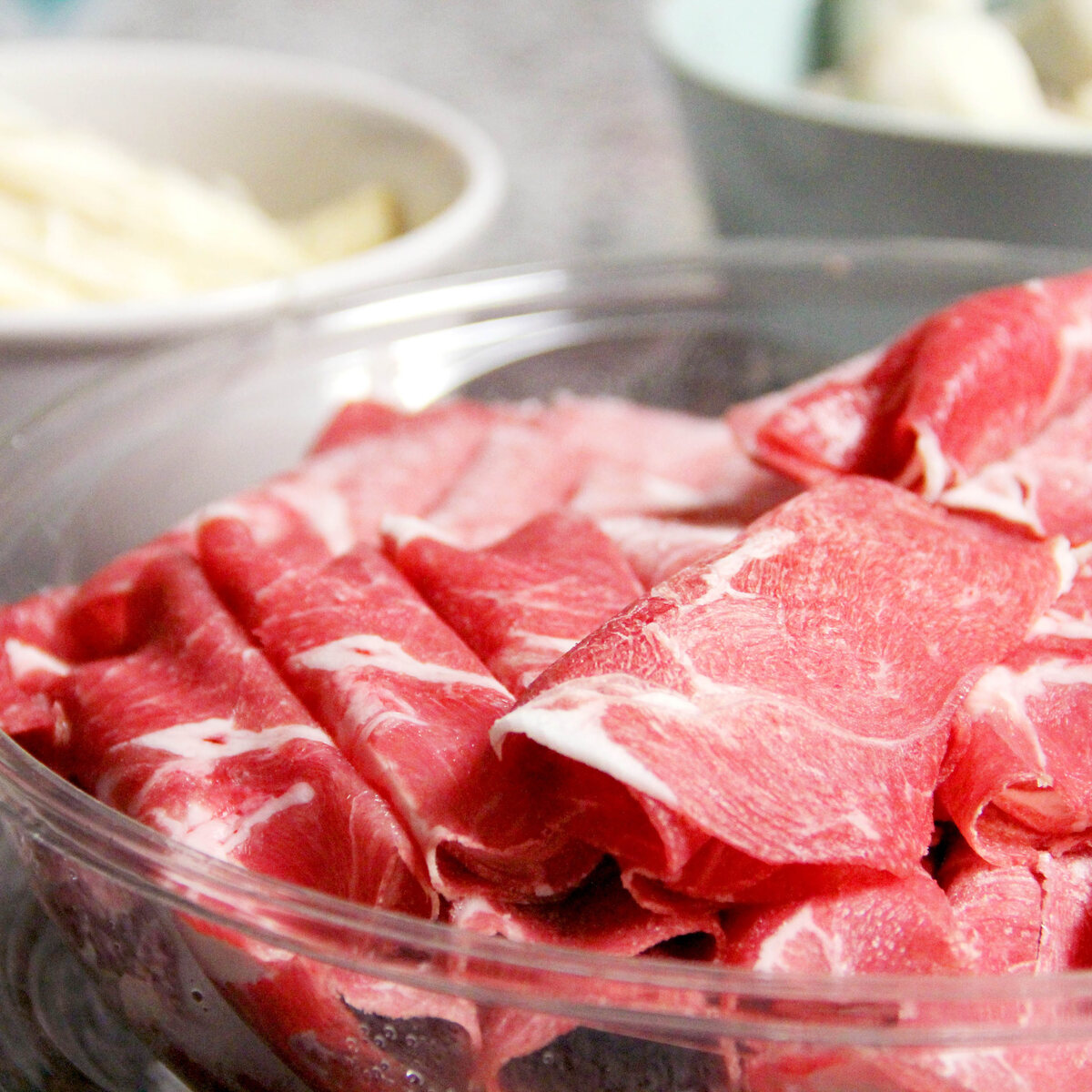
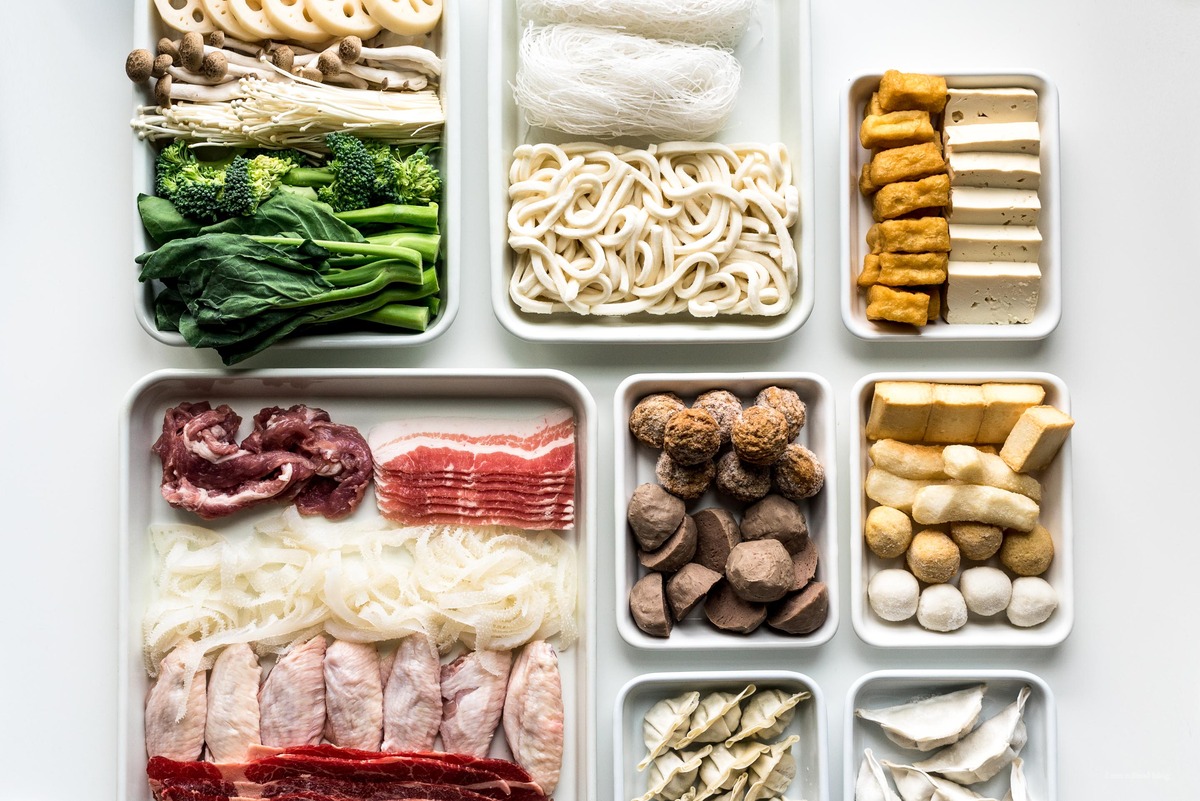
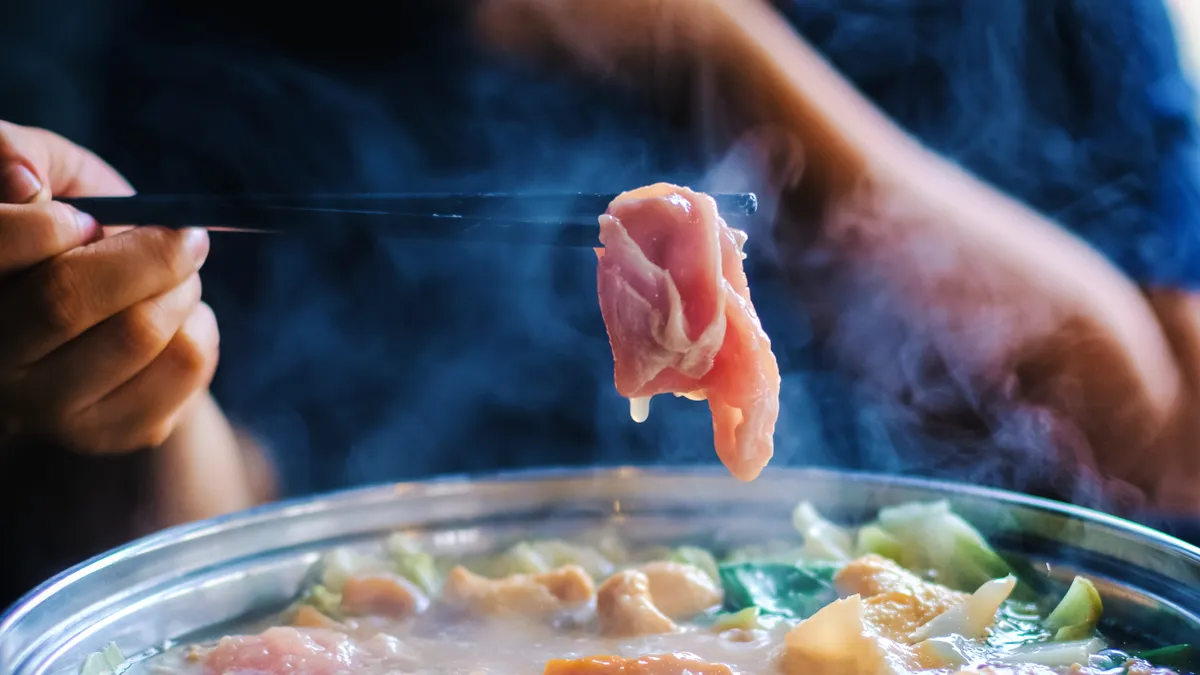
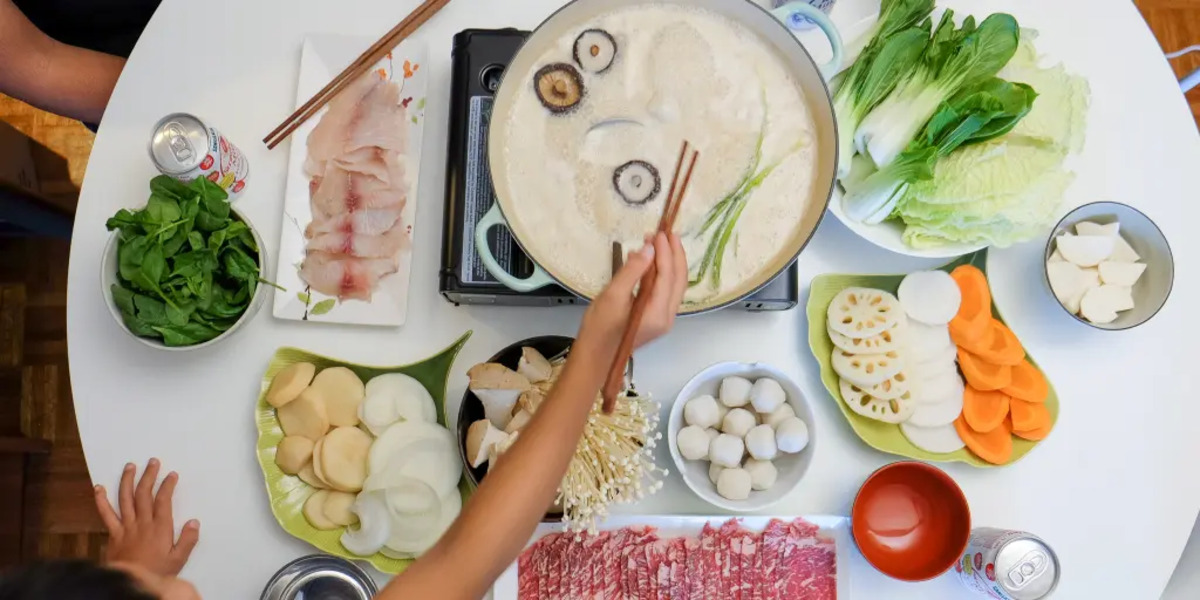
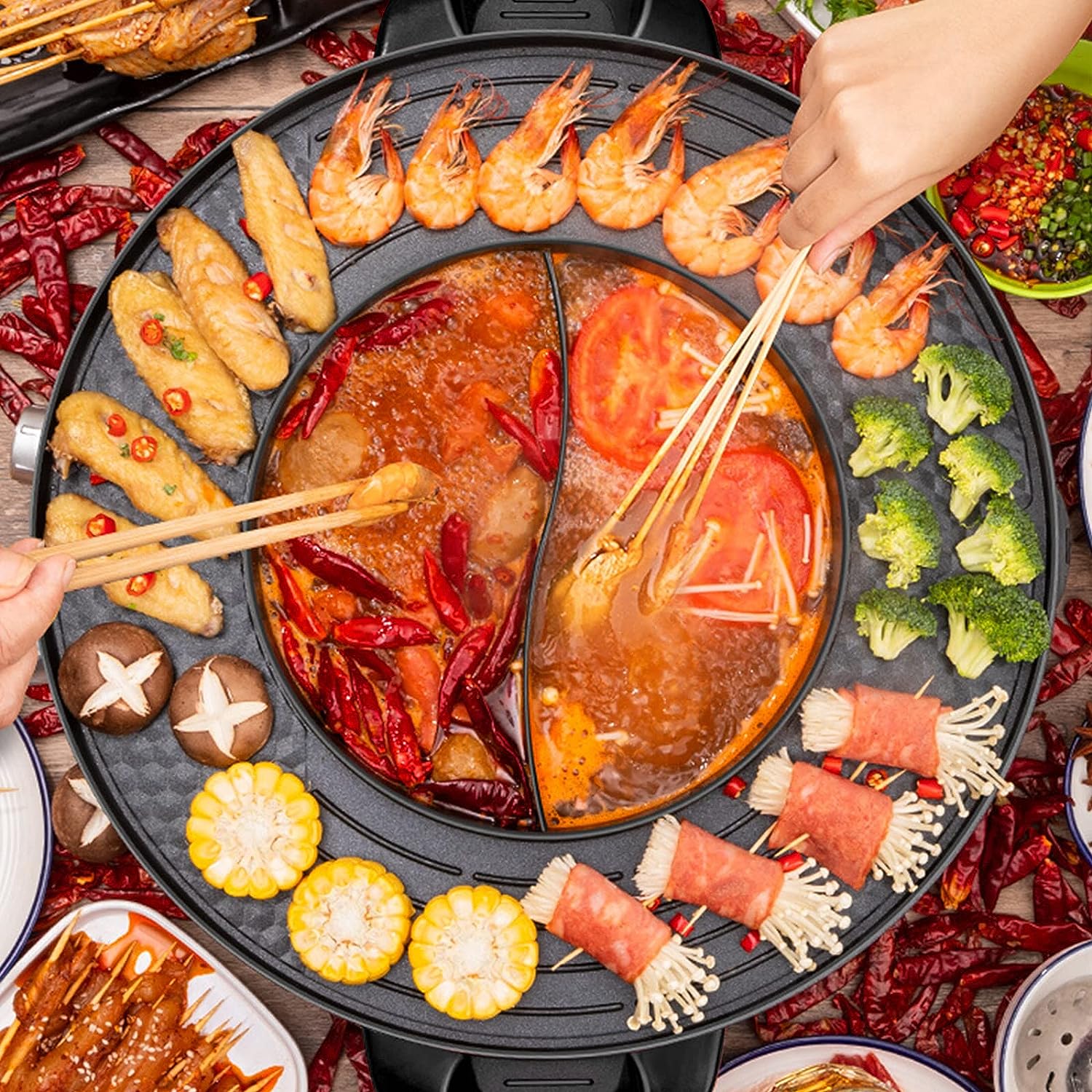
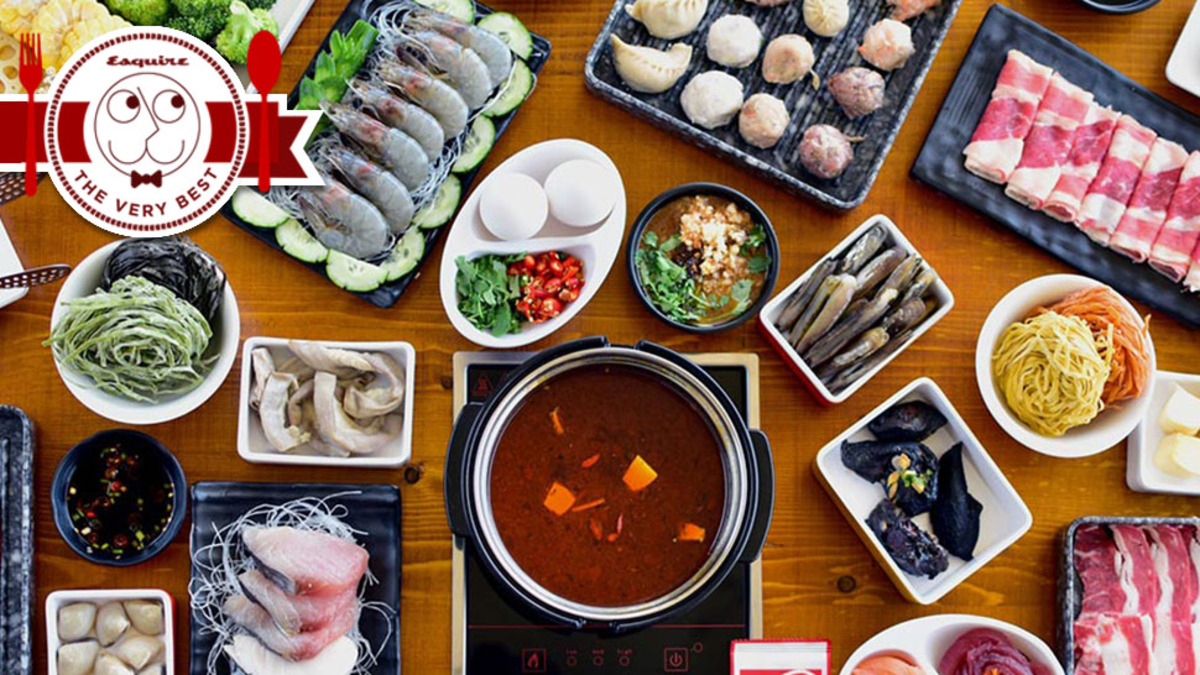
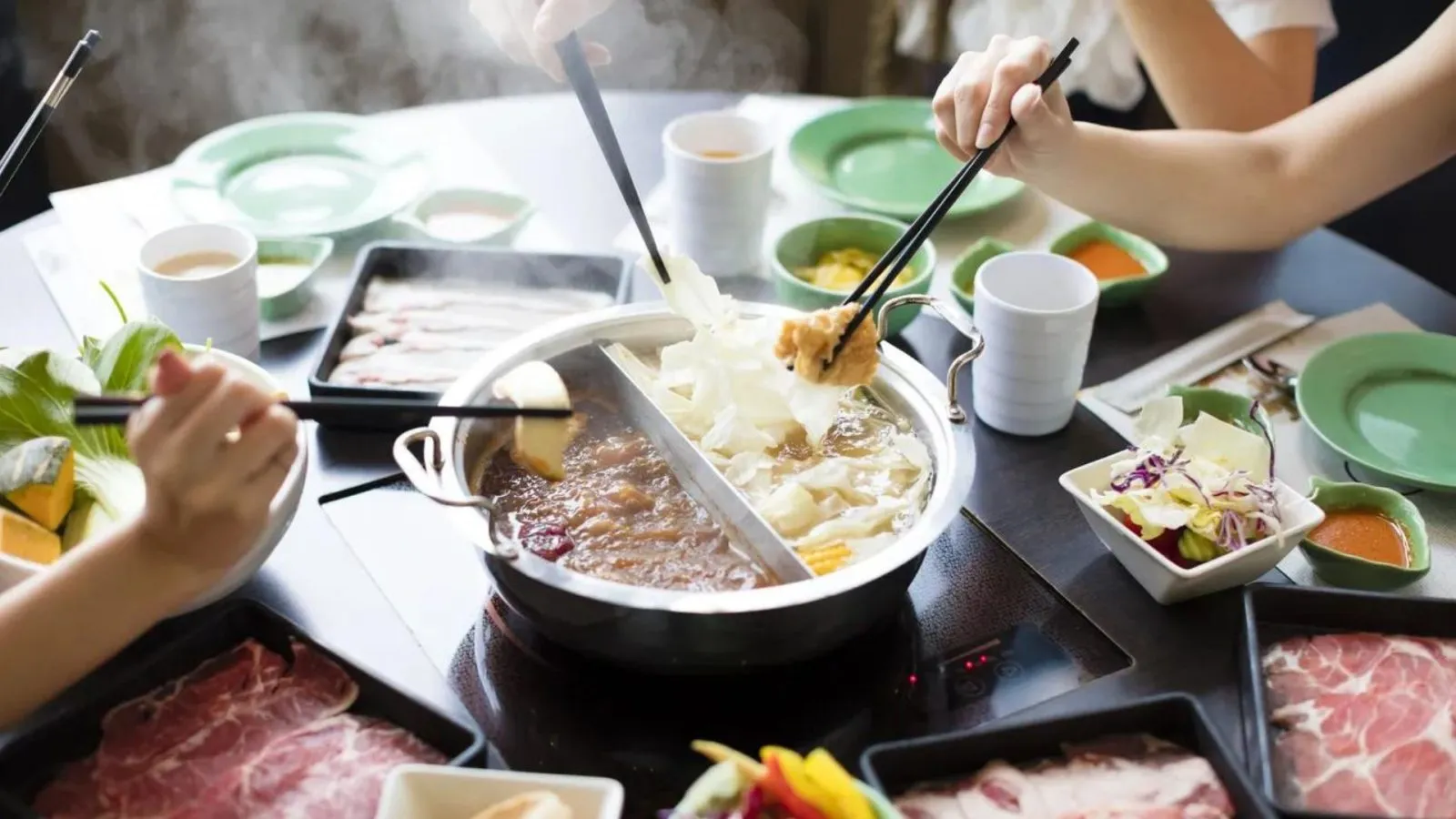

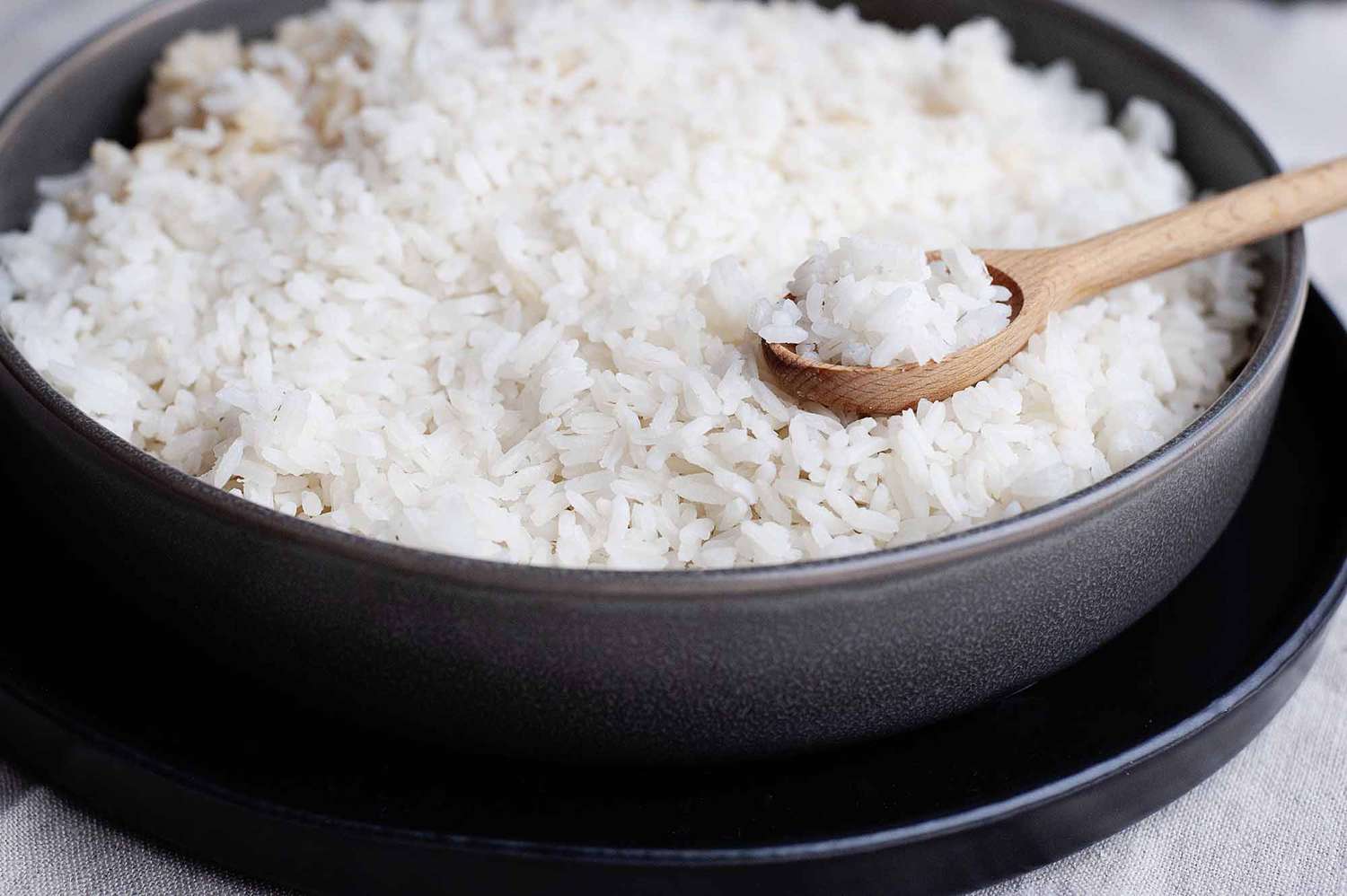

0 thoughts on “What Is A Korean Hot Pot”